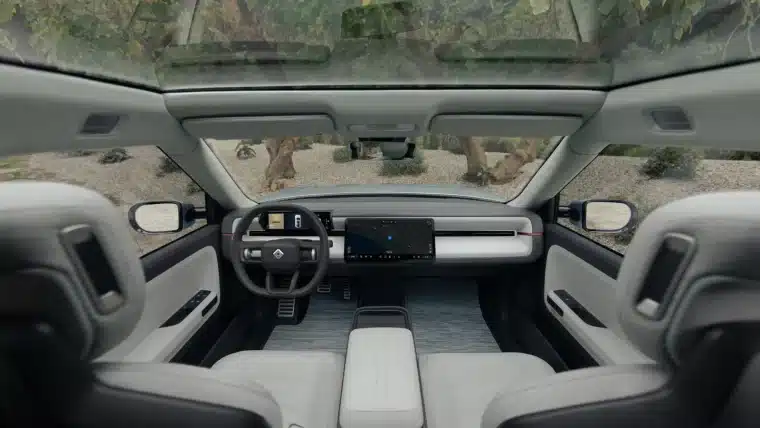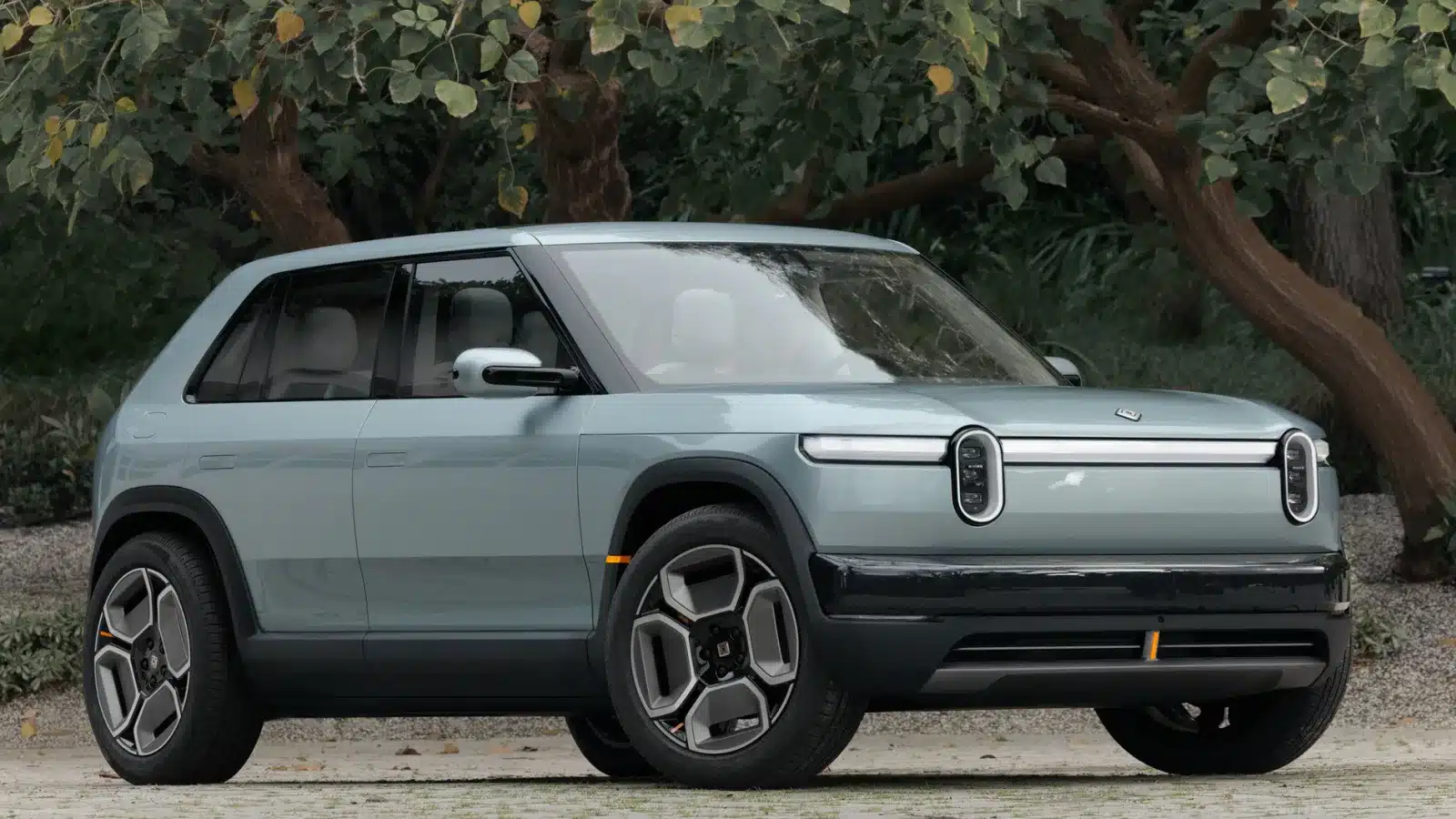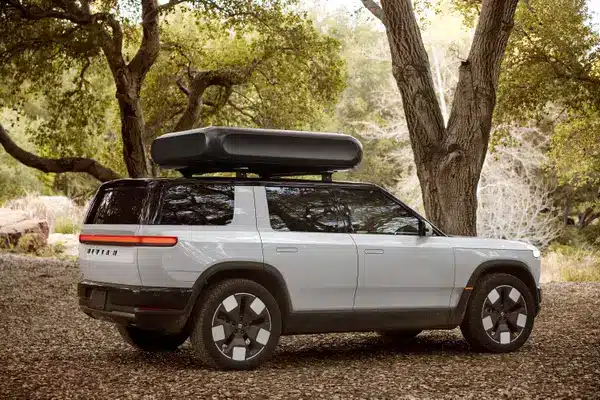The electric vehicle startup Rivian shook the automotive and tech community when it announced it is expanding its product lineup and reaching more budget-conscious consumers with the reveal of two new, smaller, and more affordable SUV models – the R2 and R3. The vehicles are set to become some of the most popular EVs in the country because of their incredible value, assuming Rivian can make enough of them.
The R2, priced at around $45,000, and the even cheaper R3 crossover represent Rivian’s play to compete directly against the dominant force of the US EV market, Tesla (TSLA), as well as with forthcoming affordable EV entries from traditional automakers.
With these more attainable models, Rivian aims to move beyond just its existing $70,000+ R1T truck and R1S SUV, both of which are more geared toward affluent enthusiasts and outdoor adventurer buyers. Amazingly, the R2 and R3 look extraordinarily similar to the R1S but are just smaller with fewer seats and a handful of missing features.
“I have never been more excited to launch new products – R2 and R3 are distinctly Rivian in terms of performance, capability, and usability, yet with pricing that makes them accessible to a lot of people”, said Rivian’s founder and CEO RJ Scaringe at the vehicles’ unveiling event in Laguna Beach, California.
Technical Specs of the R2 and R3

The R2 five-seat midsize SUV and slightly smaller two-row R3 crossover look to build on Rivian’s outdoorsy EV brand identity with sleek yet rugged designs incorporating signature styling cues like the illuminated brand “branding” across the front. However, the models sport more compact dimensions compared to the larger R1 vehicles.
Beneath the sheet metal, the R2 and R3 are underpinned by Rivian’s new midsize platform optimized for cost savings through smart design and production techniques. This includes extensive use of lightweight die-cast aluminum components, a structural battery pack that forms the vehicle’s floorpan, and simplified door and liftgate assemblies.
“Our design and engineering teams are extremely focused on driving innovation into not only the product features but also our approach to manufacturing to achieve dramatically lower costs,” Scaringe explained.
Both SUVs will offer a choice of single-motor rear-wheel-drive, dual-motor all-wheel-drive, or a performance tri-motor setup with two motors at the rear. The tri-motor variants promise exhilarating 0-60 mph acceleration in under 3 seconds.
Check out famous YouTuber Marques Brownlee’s tour of the R2 and R3 on his automotive-focused channel AutoFocus for an in-depth look at the 2 vehicles.
Rivian Offers 300-Mile Range, Fast Charging, and Autonomous Driving Capabilities
Two battery pack sizes will be available with at least one providing over 300 miles of driving range. Fast charging compatibility with both Tesla and CCS standards allows adding around 200 miles of range in 30 minutes with a high-speed DC charger.
Rivian also said that the midsize models will feature advanced autonomous driving capabilities thanks to their sensor suite of 11 cameras, 5 radars, and a more powerful computing platform compared to the R1 vehicles.
Also read: Intel Pivots to EVs, Stuns Market With New Car Chips & Breakthrough Efficiency Tech
“As with all Rivian vehicles, Rivian has developed its network architecture, topology of computers and associated full software platform to facilitate frequent software updates – the headroom for feature growth over time is extremely exciting,” the company stated.
While light on details, Rivian teased the performance-oriented R3X variant with sportier exterior styling, a wider track, and an exclusive “rugged playful” interior with vibrant colors and unique materials like cork trim.
In terms of utility and everyday usability, the R2 and R3 aim to blend Rivian’s adventurous DNA with innovative “camp anywhere” interior versatility. Both SUVs feature a front trunk storage area, a large rear cargo area with seats that can be folded flat, and the ability to turn into a makeshift camper by folding the front seats flat too.
The R2’s rearmost side windows can also pop outwards, and the full rear glass drops into the liftgate for an open-air driving experience. The R3 goes further with a “flipper window” in the liftgate that opens independently while keeping the main hatch closed, allowing longer items like surfboards to extend through.
Inside, Rivian focused on simplifying the cabins versus the tech-heavy interiors of the R1 models. However, there are unique touches like dual glove boxes – a feature the R1 lacked entirely – and a new steering wheel design incorporating large scroll wheels with haptic feedback.
Deliveries will Start in 2026, Customers can Preorder with $100
Rivian plans to begin deliveries of the R2 in the first half of 2026 while the R3 and R3X will be hitting the streets later to allow a smoother production ramp-up of the R2. Notably, R2 production will take place at Rivian’s existing plant in Normal, Illinois, rather than its under-construction Georgia factory.
This production shift will provide over $2.25 billion in cost savings versus allocating R2 output in Georgia. It also accelerates the model’s launch timing, provides enough cash to fund operations through the R2’s start, and expands Normal’s annual capacity to 215,000 vehicles across all of Rivian’s consumer and commercial models.
“R2 represents the essence of our brand, while targeting the significant midsized SUV segment, a massive market with limited compelling EV options beyond Tesla”, Scaringe previously told investors.
However, while Tesla has had success driving EV adoption with its mass-market Model 3 and Model Y, Rivian still faces challenges breaking into the mainstream. Electric vehicles remain significantly pricier than comparable gasoline models on average despite incentives.
“At $40,000, I can buy a Tesla”, noted analyst Sandeep Rao of Leverage Shares in an interview with CNN. Dao further highlighted that the US market is flooded with choices when it comes to EVs, especially for people in the middle and upper-income segments.
There’s also upcoming competition from Volkswagen’s new Scout brand exclusively focused on off-road EVs that compete directly with Rivian’s core value proposition. Scout plans to launch its own electric truck and SUV in 2026, potentially stealing some thunder.
“Those who don’t know [the Scout name], when they do investigate it, that’s exactly what you want with a brand”, Scout’s CEO Scott Keogh told CNN, alluding to the established heritage behind the Scout name versus Rivian’s new brand identity.
Still, hitting the $45,000 base price could qualify the R2 for federal tax credits, bringing the true cost down closer to $37,500 before state incentives. This would make it far more accessible than Rivian’s flagship R1 vehicle at just over half the price.
Also read: Apple Pulls Plug on Decade-Long Dream of Building an EV – Billions Down the Drain
Scaringe and Rivian seem keenly aware of the need to reach audiences beyond deep-pocketed early EV adopters in 2026 when the R2 arrives.
“R2 provides buyers starting in the $45,000 price range with a much-needed choice with a thoroughly developed technology platform that is bursting with personality”, the CEO emphasized. “I can’t wait to get these to customers.”
Judging by Rivian’s stock surging over 13% following the R2/R3 unveiling, investors clearly share some of Scaringe’s enthusiasm about taking the brand further closer to customers in lower income brackets.
Now, executing flawlessly on cost-effective production of these mainstream EVs becomes pivotal for Rivian to truly establish itself as more than just a niche player.

